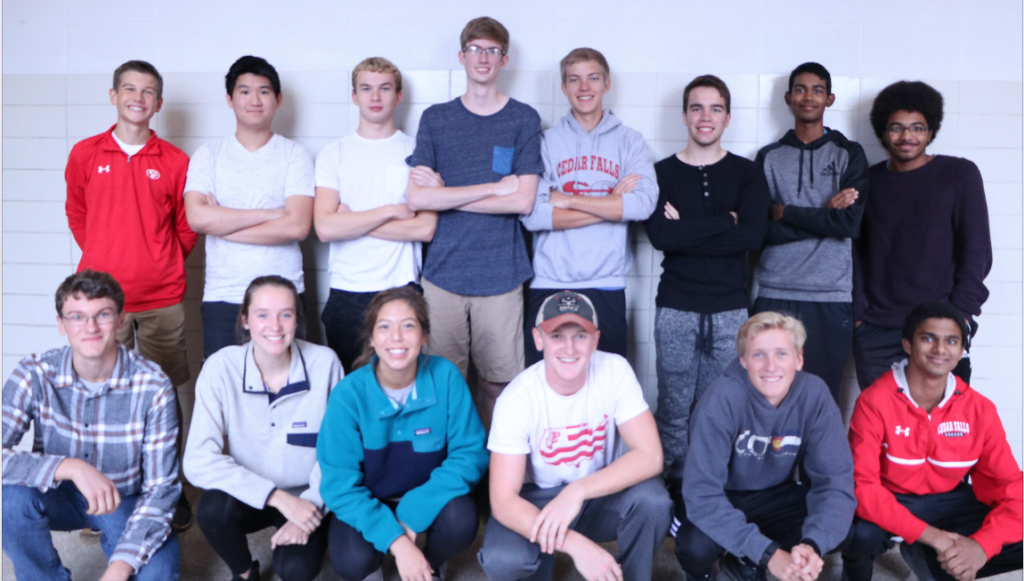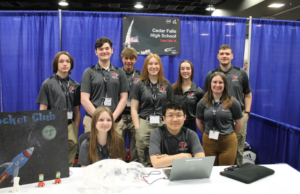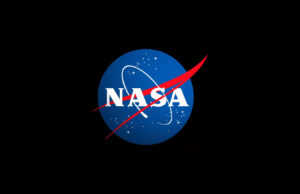S.T.A.R.S rocket club launches new NASA project

Top left, TJ Tomlyanovich, Frank Zhang, Benson Redfern, Calvin Timmer, Ducan Meyer, Andrew Mord, Siddhartha Kalala, Andre Bryan. Below from left, Nathan Hoffman, Taylor Hanson, Marika Yang, Austin Cross, Erik Walther, and Randev Goonesekere.
On April 6, 2019, the Cedar Falls High School “S.T.A.R.S” rocket club will be finally shooting off their rocket “Valkyrie” and bringing it back to the home base “Valhalla” at the National Aeronautics and Space Administration (NASA) Student Launch exploration conference in Huntsville, Ala.
“This year our project is called Valhalla, and it comes from Norse mythology. The rocket is named Valkyrie. In Norse mythology you have Valhalla, which is the vikings’ heaven, and Valkyries are angels that take vikings that have died in combat to Valhalla,” junior rocket club member Austin Cross said. “That was our original plan, to bring the rocket back down. We are leading our rocket back down to our launch pad, Valhalla [heaven],” he said.
To get to the official launch date and demonstrate their final proposal and design to NASA, the 14 students in the club and their mentors will put in a year’s worth of hard work.
“These students have to raise $10,0000 to $12,000 a year and have to prove their work to NASA scientists. It gives them a really good job experience,” rocket club mentor Zeb Nicholson said. Nicholson is a former CFHS teacher and currently a mechanical engineer at Doerfer.
On the team, the five sub-groups—payload design, vehicle design, outreach, fundraising and safety collectively—get the tasks done to prep the building of the rocket.
“The build process will take us from now to February. We won’t actually get the green light to build until early November,” Nicholson said.
Another report will be written to the NASA launch board with every detail so they can get their next signal to build. “What it is is the exact process to go through to build a real rocket. Every step that NASA does, we do on a smaller scale,” Nicholson said.
For the rocket club, this year’s proposal was accepted by NASA, and their first “go ahead” for their plan was approved on Oct. 4.
“We feel like this year’s proposal was an extension of last year’s regarding the content and improving it with adding more or less in different areas. Students were able to take the proposal form last year and learn from it and challenge themselves,” Nicholson said.
This year, the club has proposed a new idea for their rocket.
“I am really excited to show our idea that we proposed. It is about parafoils, which was kind of a big deal, so I am excited for us to expand on it,” outreach group leader senior Marika Yang said. “A parafoil is what parachutes have to guide it when you pull on it, but it is automated so the rocket will be more advanced,” she said.
As new designs are being introduced, failure is a factor that the students try to eliminate to the smallest percentage possible.
“We have a pretty good idea of what is going to happen, but in the proposal we write for the rocket launch, one of the titled pages is just what could go wrong during the launch, what can break, really anything that will go wrong, but we try to prevent that,” Cross said.
With recent budget cuts of $561 million for NASA, the competition was made smaller and more intense, cutting down the competing high schools for this year’s student launch from 14 to just seven.
“The competition is going to be interesting this year. It is a little more narrowed down because some of NASA’s funds got cut and there are high school teams as well as college teams,” Cross said.
Despite the narrowed competition for the 2019 student launch, the S.T.A.R.S received praise from NASA for their advanced parafoil proposal. Last year, the team swept the top awards.
“Last year we got two of the highest awards out of the seven given and were named the highest high school team,” co-leader of the rocket club senior Erik Walther said.
“When the rocket launch has finally happened, it is a sigh of relief because of all the hard work we have put into it. Last year we had some troubles with some of our launches,” Walther said. “Last year we had six students, but this year we have 14, so this year we have a lot stronger team, and I think we can do really well.”









You must be logged in to post a comment Login